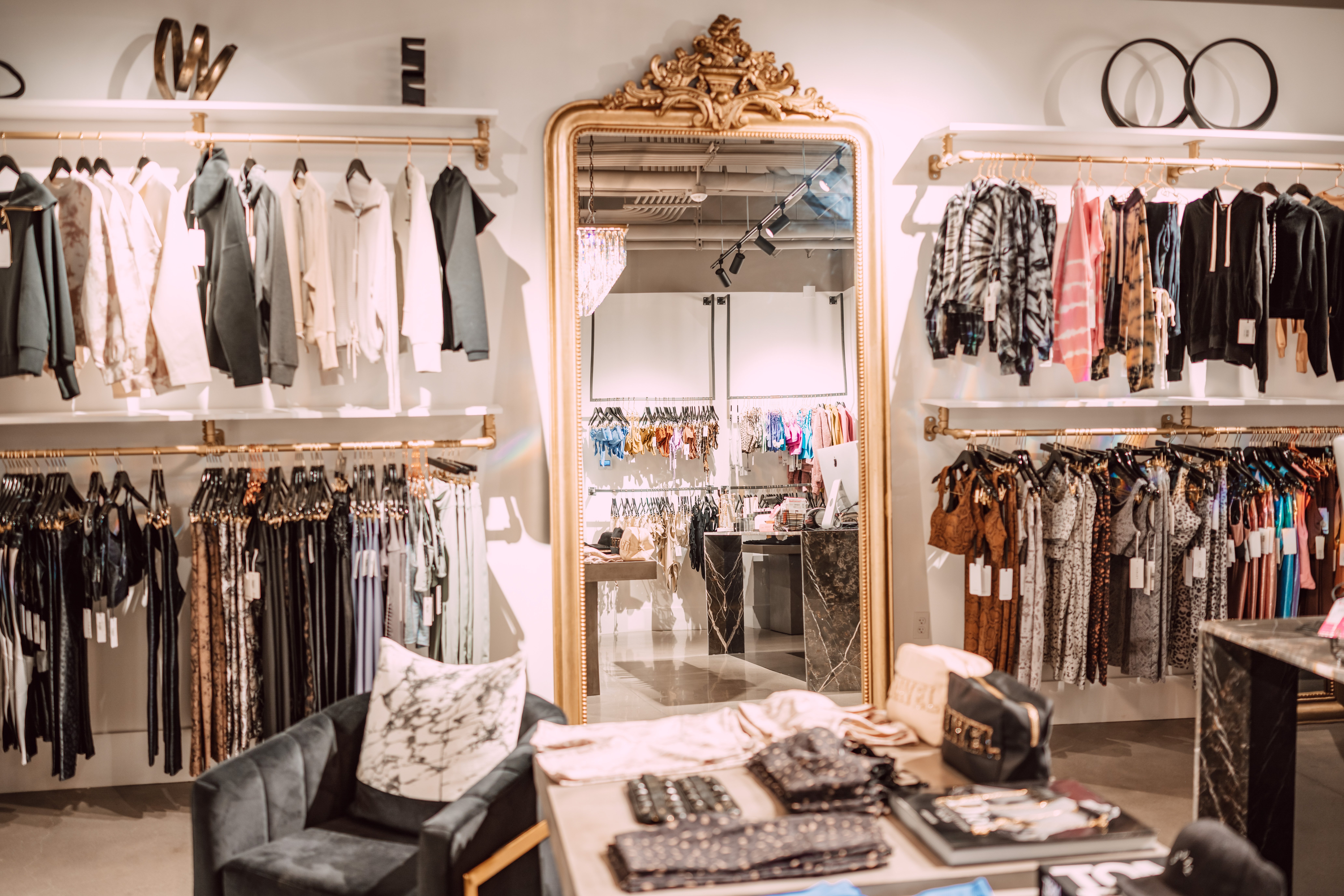The Impact of Social Media on Today's Boutique Fashion Trends
Exploring the Development and Effect of Apparel on Modern Style Trends
The evolution of garments has actually dramatically influenced contemporary fashion patterns, combining historic criteria with cutting-edge developments. Famous numbers like Coco Chanel and Yves Saint Laurent changed the garment industry by introducing concepts that prioritize comfort and ease of access, which continue to resonate today. On the other hand, technological strides in areas such as 3D printing and wise textiles are redefining style possibilities and consumer experiences. Additionally, the growing focus on inclusivity and sustainability is improving sector criteria. As we take into consideration these diverse impacts, one should doubt exactly how these elements collectively redefine style's duty in mirroring and forming contemporary culture.
Historical Fashion Influencers
In the tapestry of style background, specific figures have actually left an indelible mark, forming the fads and styles that specify entire eras. Coco Chanel, a revolutionary developer, redefined women's style by introducing comfortable, sophisticated clothes that departed from limiting corsets. Her legendary Chanel fit and little black outfit have actually become classic staples in wardrobes worldwide. Christian Dior's post-war "New Look" in 1947, with its party of womanhood via full skirts and cinched waistlines, marked a return to luxury and has actually continued to affect designers.
Elsa Schiaparelli is an additional pivotal figure, renowned for her progressive layouts that included surrealist art, working together with Salvador Dalí to develop wayward pieces that challenged traditional visual appeals. Her ingenious usage of shade and bold patterns reverberates in modern style. Yves Saint Laurent, meanwhile, democratized haute couture with prêt-à-porter collections, bringing runway designs to the masses and establishing a criterion for modern ready-to-wear lines.
These visionaries, to name a few, not just changed style in their times but also set withstanding patterns that reverberate in today's apparel industry, giving a structure whereupon modern designers continue to innovate and build. Their legacies highlight the significance of imagination and bold in style's ever-evolving narrative.
Technological Improvements in vogue
In the middle of the dynamic landscape of the fashion business, technological developments stand at the forefront of development, reshaping how designers develop and customers involve with fashion. The combination of 3D printing has transformed design processes, making it possible for designers to explore complicated frameworks and sustainable materials that were previously impossible. This modern technology promotes fast prototyping, minimizing waste and speeding up production times.

Smart textiles, embedding modern technology into materials, are additionally transforming the market. Advancements like self-cleaning and temperature-regulating materials use enhanced functionality and convenience. Wearable modern technology, incorporating functions like physical fitness monitoring and interaction, adds a new dimension to style, combining aesthetics with practicality.
Social Changes and Design
As technical innovations remain to improve the apparel industry, social changes are similarly prominent, redefining style and consumer preferences. In recent times, the rise of social media platforms has actually increased the circulation of international fashion patterns, allowing diverse social impacts to exist together and converge. This digital interconnectivity has actually promoted the quick exchange of ideas, resulting in a more inclusive and eclectic analysis of design that shows the multifaceted nature of modern-day culture.
Cultural awareness and appreciation have actually triggered designers to attract motivation from a broader range of historical and ethnic contexts, incorporating conventional concepts with modern aesthetic appeals. This fusion has actually led to fashion that reverberates with a larger target market, promoting a sense of identification and belonging across various demographics. Additionally, the raising need for personalization has actually driven brands to supply adjustable alternatives, allowing consumers to reveal individuality while showing their cultural heritage.
In addition, moving social worths have actually affected style, with inclusivity and variety becoming central themes. The market has begun to welcome designs and influencers of numerous type of body, ethnic cultures, and gender identifications, challenging traditional elegance requirements. This makeover underscores the power of social changes fit the future of style, as design becomes a much more genuine expression of personal and collective identity.
Sustainability and Modern Style
While the fashion industry proceeds to advance, the essential for sustainability has become increasingly urgent, affecting modern-day layout methods. The increase of sluggish fashion, which emphasizes quality over amount, urges consumers to invest in timeless items instead than transient trends.
Furthermore, contemporary design is identified by its advancement his response in minimizing waste this contact form and advertising circularity. This method not just reduces ecological effect yet likewise boosts the social obligation of style houses.

Future Trends in Style

Sustainability will remain to be a driving pressure in shaping future fashion trends. The market is significantly adopting environment-friendly materials and ethical production techniques, reacting to an expanding consumer demand for accountable practices. Advancements such as bio-fabricated products and closed-loop recycling systems are readied to redefine just how clothing is produced and consumed, decreasing environmental influence while maintaining style and top quality.
Social shifts, consisting of the rise of inclusivity and diversity, will certainly likewise play an essential role. As society comes to be a lot more mindful of social concerns, style is anticipated to end up being a system for expression and adjustment. Developers will likely concentrate on developing collections that reflect a broader range of identifications and experiences, championing depiction and availability.
Verdict
The development of clothes significantly influences contemporary style patterns, where historical impacts merge with modern styles. Secret figures like Coco Chanel and Yves Saint Laurent have actually redefined design, while technical advancements such as 3D printing and smart textiles expand imaginative possibilities. Cultural changes towards inclusivity and sustainability urge brand names to embrace honest practices and accept diversity. This continuous advancement emphasizes style's duty as a mirror to social values and technological advancement, suggesting a future abundant with technology and inclusivity.
The evolution of clothing has actually considerably affected modern style fads, combining historic criteria with cutting-edge advancements.Among the dynamic landscape of the style sector, technical innovations stand at the forefront of development, reshaping how developers develop and consumers engage with fashion.While the fashion sector continues to evolve, the essential for sustainability has actually become progressively immediate, affecting modern design practices. As sustainability comes to be ingrained in modern-day style, it paves the means for an extra mindful and liable style industry.
The development of garments substantially affects modern-day helpful hints fashion fads, where historic impacts combine with modern designs.